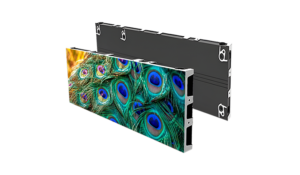Home » LED Technology
Category Archives: LED Technology
Panels for an LED Video Wall
Led Video Wall Panels are a fantastic way to display information in large formats. They work well for a variety of applications, including airports, control rooms, and public spaces where you need to communicate important information quickly and effectively.
They can also help boost productivity and make presentations more effective. However, you should consider a few factors before making your decision.
LED video wall panels come in a variety of sizes. They can be used for advertising, public displays, and informational displays.
The size of an LED video wall depends on the content and viewing distance. If the content is intended for an indoor audience, the pixel pitch should be narrow enough to deliver clear pictures from a close distance.
Led video wall panels display visual content as if they were computer monitors, transforming any room into an immersive experience. They can be installed indoors or outdoors and are often used at sporting events and concerts to stream videos of the artist.
LED panels are more affordable than LCD screens and can be used in a wide range of settings. They are also more durable and don’t get hot or burn out.
The pixel density of LED video walls is an important consideration for choosing the right display. This number represents the distance between two pixels on an LED display board (in millimeters).
Generally, smaller pixel pitches provide more optimal viewing distances. This is especially true for indoor displays such as airport signage and shop windows, where people tend to be close to the screen.
Pixel pitch is a measurement of the distance between the centers of two LED pixels on an LED display. Higher pixel pitches yield higher resolutions.
Choosing the right pixel pitch is essential for a successful LED video wall. It determines the viewing distance, display size, and cost of LED panels.
Brightness is a critical feature in LED video walls. The brightness of an LED display is measured in nits, which can range from 2,000 nits for indoor applications to over 10,000 nits for outdoor solutions.
The brightness of an LED video wall is non-linear and varies with ambient light. It also depends on viewing distance and projection angle, so the brightness of a video wall is not always comparable to the brightness of a single projector.
The contrast ratio is a measure of how bright white and black are on a display. It is a measurement that does not depend on image processing settings such as local dimming.
While the contrast ratio of LCD panels is usually 1500:1, LED tiles can provide a contrast ratio of up to 500,000:1. This helps viewers better recognize the information displayed on the screen, which reduces eye strain.
Whether you’re setting up a display in a house of worship, performance venue, or other commercial space, color accuracy is essential for presenting your message to audiences. Video wall technology requires perfect calibration to avoid the slightest shift in brightness and color over time.
In addition to LCDs, LEDs are also a common display technology for video walls. However, color and brightness inconsistencies can occur with LEDs, especially when they’re used together over a period of time.
LED video walls are flexible in their design, allowing them to be used for many purposes. They are also easy to install and replace, saving time and money.
They are an ideal choice for large-scale outdoor and indoor applications such as stadiums, airports, concert venues, and shopping malls.
The flexibility of LED video wall technology allows businesses to create custom displays that communicate with audiences in unique ways. This can lead to a more engaging and successful experience.
If you’re planning a video wall project, there are many factors to consider. The location of the display, pixel density, and accessibility will all impact its effectiveness.
Typically, LED video walls are installed in a public space where there will be high foot traffic. This is important for ensuring that the display doesn’t interfere with walking paths or violate ADA regulations.